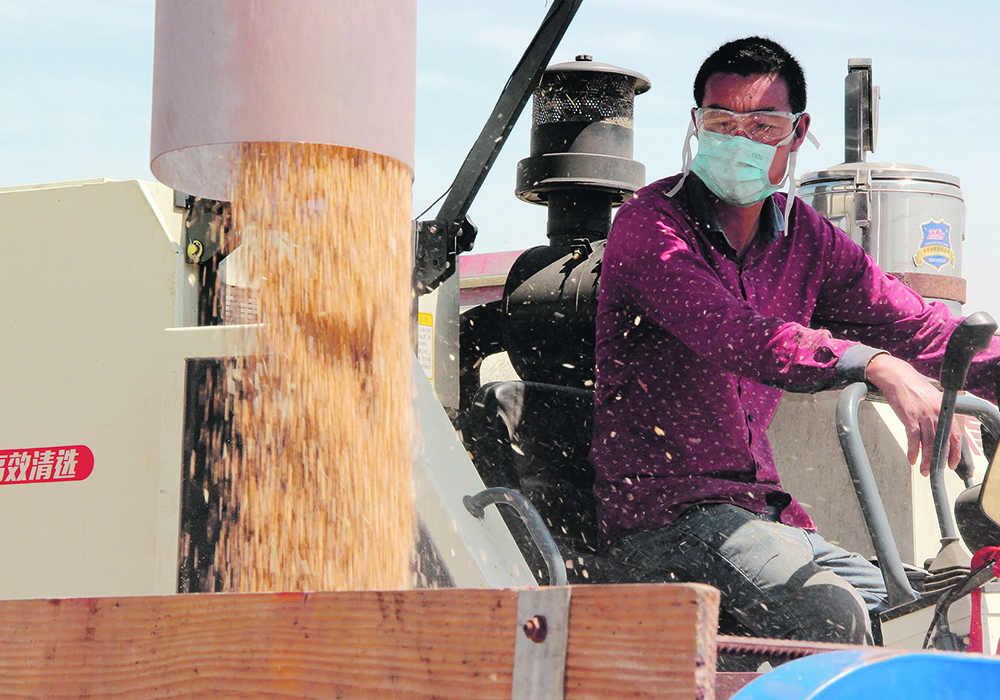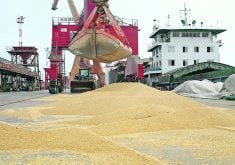China hates it when analysts and food commentators accuse it of grain hoarding or allege its enormous grain stockpiles add to food inflation.
I agree. If China drives up food costs it’s because of its production shortfalls, not hoarding.
Russia’s war on Ukraine has upended Black Sea grain exports, adding to soaring prices and raising the spectre of food shortages in poor countries such as Egypt and starvation in populations that rely on international food aid to survive.
As the world searches for grain to fill the gap, some look at China’s huge stocks of wheat and corn and suggest it could release some to help the desperate.
Read Also

Volatile temperatures expected for this winter
DTN is forecasting a lot of temperature variability in the Canadian Prairies this winter. Precipitation should be close to average.
“Ukraine war gives Egypt a wheat crisis only China can solve” was a recent headline in the Washington Post on an analysis piece by Bloomberg’s David Fickling.
Indeed, at the end of the 2021-22 crop year, the U.S. Department of Agriculture estimates China to have 142 million tonnes of wheat, or about 51 percent of total global stocks. That is enough to meet the country’s needs for about 18 months.
China’s corn stocks of 210 million tonnes are almost 70 percent of global stocks.
Its grain reserves are large compared to its 20 percent share of global population.
In previous columns I’ve noted questions about the quality of these stocks and about the veracity of its agricultural statistics, but for now let’s accept that the stocks are large.
Fickling argues China could easily draw a from its stores to help meet Egypt’s needs. In doing so it would garner good will and soft power in a world increasingly defined by great power competition between China and the U.S.
Others are more critical of China. Another Bloomberg analyst, Adam Minter, in January wrote a column with the headline: “One reason for rising food prices? Chinese hoarding.”
Chinese buying has increased, but there is a difference between buying and hoarding.
In the 2017, 2018 and 2019 market years Chinese imports of corn, wheat, barley, sorghum and rice were 25 million tonnes or less, but in 2020-21 that total soared to about 65 million tonnes and in 2021-22 it is forecast at about 58 million. And that is on top of the 95 to 100 million tonnes of soybeans it has imported annually in recent years.
The buying last spring helped fuel a strong price rally.
But China’s state-controlled media push back against allegations that the country’s stockpiles amount to hoarding that drives global grain prices higher.
A South China Morning Post story about the question of hoarding quoted a commentary published by the state-controlled Economic Daily in January.
“China’s grain imports are set to meet its structural shortage. It’s a necessary supplement on top of high domestic production. It has nothing to do with hoarding,” the Economic Daily wrote.
China colours its agricultural statements with a lot of propaganda, but in this case, I agree with the Economic Daily, and it points to a more significant issue than hoarding.
The wheat and corn it imports do not go into its stockpile.
The wheat imports are mostly high-quality grain that it can’t produce itself.
The imported corn makes up for its inability in the past couple years to keep up with fast-rising demand.
In 2020-21, corn demand exceeded domestic production by 17.3 million tonnes and in 2021-22 by 21.4 million, despite a record large crop.
More worrisome, the U.S. agricultural attaché in China forecasts that in 2022-23 the shortfall will grow to a whopping 35 million tonnes.
The attaché forecasts that the shortfall will be covered by 20 million tonnes of imports and by pulling its stocks down by 15 million tonnes.
I think it is a good thing for China to have large stocks, although its current size might be excessive.
Its recent corn shortfalls developed even with a record corn crop of 272 million tonnes and wheat crop of 137 million tonnes.
What would happen if China had the kind of drought the Canadian Prairies had last year when production collapsed by close to a third?
That would imply shortfalls of at least 150 million tonnes of grain.
China’s grain imports are a welcome bonus for exporters such as Canada, but a sudden massive demand resulting from a Chinese crop failure without strategic reserves to draw on would be an unresolvable food crisis far greater than the one now caused by the war in Ukraine.
It is clear China must increase its domestic production capability to avoid greater risks and geopolitical weakness.
Given that its agricultural land resources are already all cultivated, it must improve yields.
The government recognizes this and is abandoning its scepticism about planting genetically modified crops as part of a new blueprint on food security.
It has a new system for introducing GM crops and a plan to build up domestic seed companies as part of an effort to improve yields.















